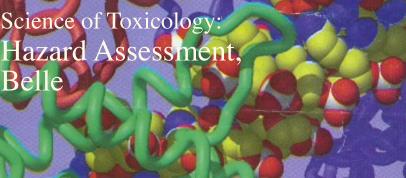 |
||||
The Biological Effects of Low Level Exposure (BELLE) is an area of research that has been active for more than the past decade but, because of numerous recent advances, both in knowledge and testing, has identfied new and divergent areas of interest. Accumulating data on endocrine disruptor chemicals (EDC) shows adverse effect--toxic effects--occurring at orders of magnitude less than was previously thought possible. This is because of the combined effects on the endocrine systems which tends to magnify effects, and during development in the fetus, when systems are especially sensitive. This contradicts some of the foundational assumptions of classic toxicology, which expects a rather predictable linear or s-shaped relationship of dose to toxicity extending from the LD50--the dose that kills 50% of a sample--to essentially zero effect. The effects seen with EDC indicate that at the very last portion of the dose-effect curve, as it approaches zero, there is an enirely different set of dose effect relationships requiring further study and new ways of thinking about this relationship. At the same time, studies ini the labs at University of Massachusetts, Amherst have shown that some chemicals, including some heavy metals, at very low levels, are capable of exerting a beneficial effect. Whether this is a function of dose, a particular chemical or specifically certain heavy metals with close assocations to essential metals (cadmium to zinc, for example), remains to be determined. This section will be examining these different questions and reporting the developments as they occur. |
||




Risk Assessment is another type of causation: predicting whether an exposure, usually in a population rather than a single individual, will increase the risk of developing some adverse health effect, without necessarily determining whether such health effect actually occurs. Risk means that all such exposed individuals are more likely to develop an adverse effect, but it does not mean that any particular individual will or even that the majority of individuals will. Smoking, for example, increases risk of lung cancer from approximately one in 100 to 1 in 10--a signficiant increase. Nevertheless, ninety percent of smokers do not develop lung cancer, even though they are all at increased risk. Risk Assessment is used by regulatory agencies, such as the EPA, to determine how much of a chemical can be released into the environment without causing an unacceptable increase in risk of an adverse effect. 'Unacceptable' is more of a policty decision than a scientific one.
Specific causation analysis can be divided into the following three components:
(1) Hazard Assessment
(2) Exposure Assessment
(3) Health Assessment
(1) Hazard Assessment: what harm can the chemical cause, based on intrinsic toxicity and circumstnaces of exposure, form of chemical (gas, liquid, solid) and susceptibility of individual.
(2) Exposure Assessment how much of the chemical is in a media (air, water, food, soil) available to be taken into the body? Is this a one-time or multiple exposure? Does it occur over a short period of time (acute) or over many months or years (chronic)? How does the length of exposure affect the toxicity of the chemical? How much of the chemical gets absorbed into the body (dose), and where in the body does it end up (distribution and target organ/tissue)?
(3) Health Assessment: what type of health effect develops (or gets exacerbated), and does this occur immediately or after a delay (lag time)? Is this a new effect in the individual or is there a history of this type of problem, made worse by the chemical exposure? Is the individual in a high risk group (in utero, infant, elderly, reduced immune function)? Are there other (alternative) known causes for this problem and were these causes present ?
Hazard Assessment